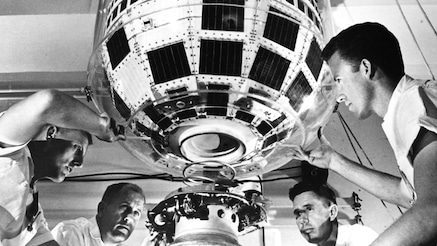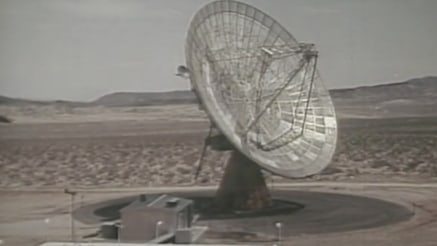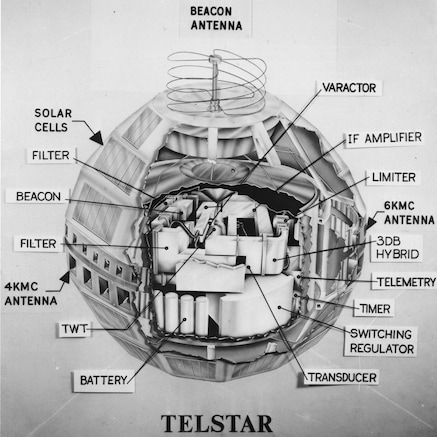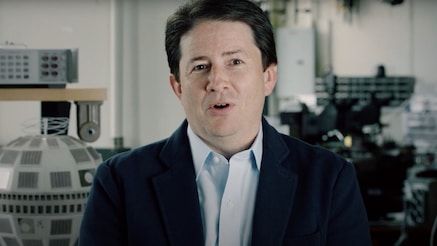On July 10, 1962, AT&T Bell Telephone Laboratories (now Nokia Bell Labs) and NASA launched Telstar 1, the first communications satellite from Cape Canaveral. Global communications changed forever.
For the first time, live television transmissions and phone signals could be relayed between the US and Europe by means of this simple looking, spherical black and white satellite. Its iconic exterior held within it 170 pounds of some of the most complex electronics known to humankind. It featured 3,600 solar cells for power and a traveling-wave tube for amplifying the radio signals. The key task of Telstar 1 was to receive signals beamed from the US, amplify them 10 billion times and rebroadcast them to live audiences in Europe, and vice versa. TV and telephone communication signals were relayed and boosted to get back down to Earth.
From the archives
Telstar 1 circled the planet every 2½ hours. It was only in the right position to beam transmissions between the US and Europe for 20 minutes in each orbit before dropping out of contact.
Future satellites were designed to work in tandem with each other, seamlessly passing the broadcast to keep transmission live at all times. At launch, Telstar 1 facilitated over 400 telephone or facsimile messages or one television transmission.
The Telstar 1 satellite was made possible by a whole series of inventions devised by the team at Bell Labs, including the recently invented transistor. Their lead researcher was engineer John Pierce, a big science fiction fan who was greatly inspired by the ideas he came across in science fiction books. He coined the term transistor and designed the technology into Telstar 1.
In fact, Pierce also wrote science fiction himself under the pseudonym J.J. Coupling: a nice in-joke for his Bell Labs colleagues, as j-j coupling is a complex hyper-physics concept involving the interaction between light atoms.
Telstar 1 and its subsequent iterations connected the globe through live transmission and changed the communications landscape forever. They even inspired the iconic World Cup soccer ball.



